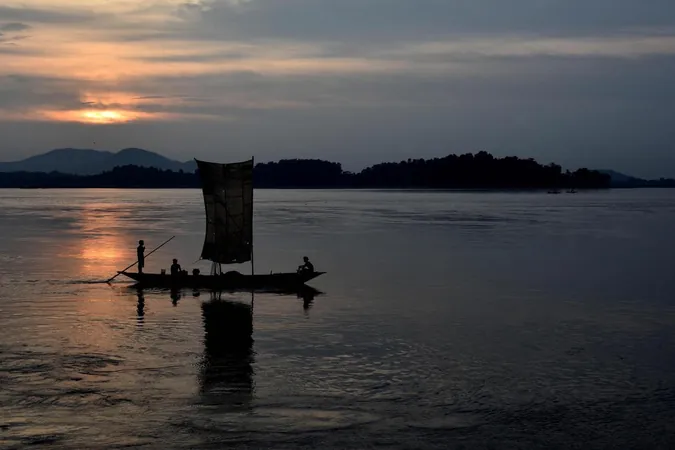
India's Ambitious Dam in Arunachal Pradesh: A Geopolitical Gamble Amidst Environmental Concerns
2025-08-25
Author: Sarah
A Historic Lifeline at Risk
For decades, Mr. Tabeng Siram has tilled the rich soil of the Siang River valley in Arunachal Pradesh, a heritage passed down through generations. But now, his ancestral farmland stands on the brink of inundation due to plans for India’s largest dam—the Upper Siang Multipurpose Project (USMP), with a staggering price tag of $13.2 billion.
The Chinese Threat Looms Large
Yet, the stakes extend far beyond India’s borders. Upstream, China is constructing the even more massive Medog Hydropower Station, a project capable of drastically altering the water dynamics of the Brahmaputra River—an essential waterway for millions across South Asia.
Geopolitical Rivalry in the Spotlight
Experts assert that the race to build these monumental dams is emblematic of the fierce rivalry between India and China, revealing both nations' growing energy needs. However, the environmental cost could be devastating, particularly in a region prone to earthquakes, raising alarms over potential disasters.
Strategic Development or Environmental Catastrophe?
The 11.2-gigawatt USMP, touted by Indian officials as a "strategic necessity," aims to counter the perceived threat posed by China’s 60-gigawatt project. With a planned reservoir capacity of nine billion cubic meters, the dam could potentially mitigate flood risks downstream, serving as a bulwark against rapid water releases from Medog.
Local Voices Raise Alarm
Yet, resistance from the local population is swelling. Many farmers, including Mr. Siram, refuse to abandon their land, fearing the USMP will devastate their communities. "I won’t move at any cost," Mr. Siram declared emphatically during a protest against the dam, emphasizing that their livelihoods depend on these ancestral lands.
Cultural Heritage on the Line
Attendees at the protest, organized by the Siang Indigenous Farmers’ Forum, represented thousands who stand united against the project. The community, which regards the Siang River as sacred, is adamant that obstructing its flow would spell disaster for their culture and sustenance.
Environmental Implications Are Dire
The ecological impact of constructing such large dams in one of India’s most biodiverse areas could be catastrophic. Recent expeditions revealed an astonishing variety of wildlife, with over 1,500 new plant and animal species documented, adding urgency to conservation efforts.
The Broader Geostrategic Landscape
The Brahmaputra River basin has transformed into a geopolitical theater, with water security now a focal point in the India-China rivalry. A stalled bilateral agreement regarding hydrological data adds to the tensions, complicating the relationship further.
Calls for Transparency and Caution
Experts warn that pursuing the USMP, driven by national security concerns, might overlook the potential ecological fallout. The prevailing sentiment among analysts is that a hasty approach may result in a 'monster' of a project without fully understanding its repercussions.
Conclusion: A Delicate Balancing Act
As the situation evolves, the Indian government is urged to reconsider its strategy and seek transparent communication with China regarding the Medog dam. The fate of the Brahmaputra and its millions of dependents may hinge on how these geopolitical tensions unfold, urging both nations to rethink their approaches in favor of sustainability and cooperation.


 Brasil (PT)
Brasil (PT)
 Canada (EN)
Canada (EN)
 Chile (ES)
Chile (ES)
 Česko (CS)
Česko (CS)
 대한민국 (KO)
대한민국 (KO)
 España (ES)
España (ES)
 France (FR)
France (FR)
 Hong Kong (EN)
Hong Kong (EN)
 Italia (IT)
Italia (IT)
 日本 (JA)
日本 (JA)
 Magyarország (HU)
Magyarország (HU)
 Norge (NO)
Norge (NO)
 Polska (PL)
Polska (PL)
 Schweiz (DE)
Schweiz (DE)
 Singapore (EN)
Singapore (EN)
 Sverige (SV)
Sverige (SV)
 Suomi (FI)
Suomi (FI)
 Türkiye (TR)
Türkiye (TR)
 الإمارات العربية المتحدة (AR)
الإمارات العربية المتحدة (AR)